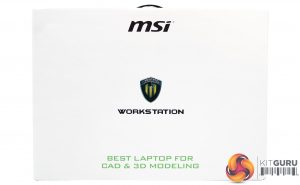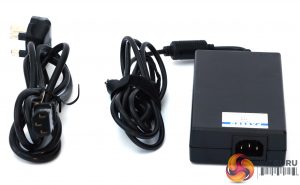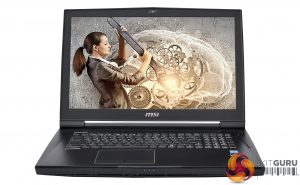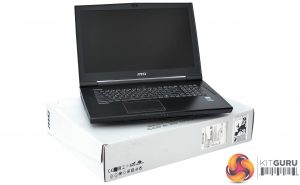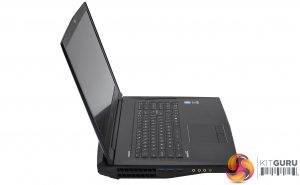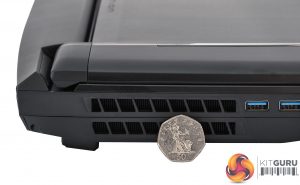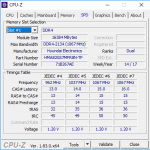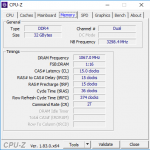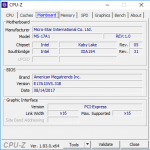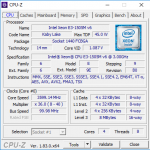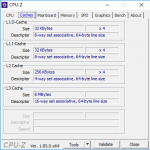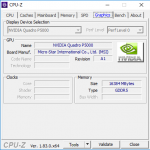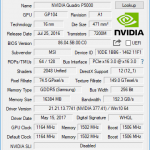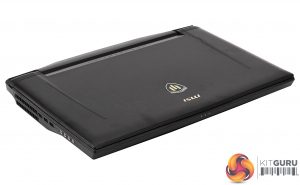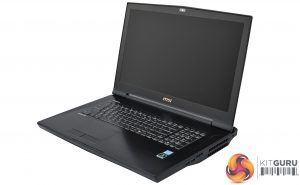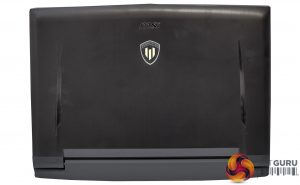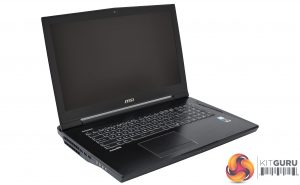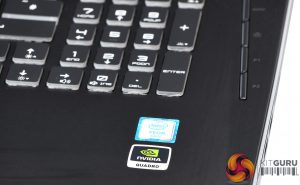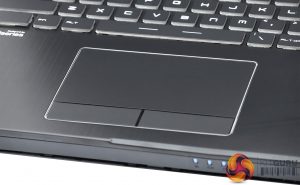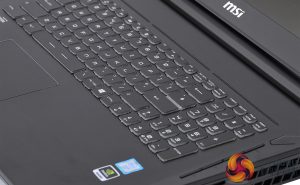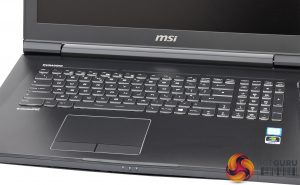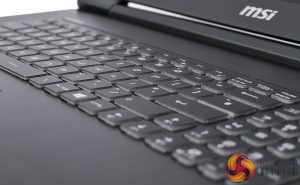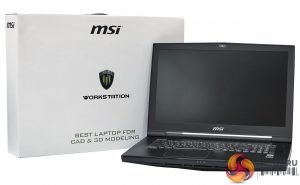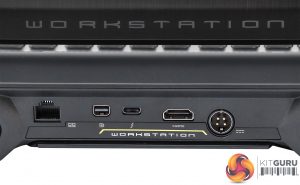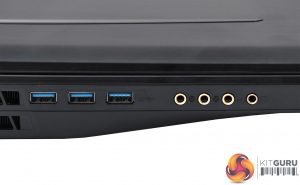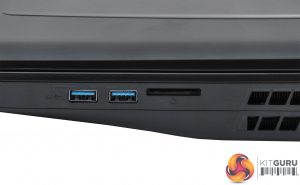The no-nonsense white box doesn't come with much inside it, other than the laptop itself. In fact, you just get the hefty power supply and a standard kettle power lead.
The WS73VR 7RM is absolutely massive. We normally use a pound coin to illustrate the width of a notebook, but this system measures 49mm at its thickest point, so even a 50p piece looks dwarfed in comparison. Design wise, this is a serious slab of matt black plastic and brushed metal. It exudes the serious amounts of workstation power within.
The Intel Xeon E3-1505M v6 is a quad-core mobile professional CPU with a nominal 3GHz frequency. It comes from Intel's Kaby Lake generation, offering a 4GHz Turbo Mode for a single core, 3.8GHz for two cores, and 3.6GHz for four cores, so there's plenty of processing grunt available, particularly with Hyper-Threading on hand to provide eight virtual cores.
The processor is backed by a decidedly healthy 32GB of 2,133MHz DDR4 SDRAM. This will be plenty for most 3D content creation on the move, and this system also supports 64GB if more is needed. There are two SODIMM slots free for upgrade.
The Intel Xeon processor supposedly has Intel HD 630 graphics built in, but this appeared to have been disabled and wasn't showing up, so you won't get the benefit of its much lower power consumption than the discrete graphics.
The only graphics available therefore is the mobile NVIDIA Quadro P5000. This has the same 2,048 CUDA cores as the desktop version, and the same 16GB of GDDR5 memory. However, the core speed is considerably slower – 1,164MHz versus 1,607MHz for the desktop version, and with a 1,506MHz Boost versus 1,733MHz.
So performance won't be the same, but it will be close, and definitely better than any other mobile workstation graphics currently available. Similarly, the 16GB of GDDR5 memory sits on the same 256-bit bus, but operates at 6,006MHz rather than 9,016MHz, so only provides 192GB/sec of bandwidth rather than 288GB/sec, which will have a further impact on performance with large texture sets. But there is a huge amount of frame buffer available.
Since this is a Quadro graphics accelerator, the GPU will be accredited and supported by professional software vendors, too.
There are two options for the 17.3in IPS panel. One has a 4K UHD resolution – 3,840 x 2,160 – and the other Full HD (1,920 x 1,080). Our sample came with the latter, and it's a lovely screen for content creation work. Detail is excellent, colour fidelity is superb, and the viewing angles are wide. This might seem a low resolution for a 17in screen, but we find 4K on a laptop to be hard to use effectively.
There's also a 720p webcam in the middle of the top of the bezel.
Our WT73VR 7RM includes three drives – two 128GB Toshiba THNSN5128GPU7 M.2 NVMe SSDs and a single 1TB HGST Travelstar 7K1000 7,200rpm conventional SATA hard disk. The two SSDs have been combined together into a RAID 0 array for improved performance, so they appear as a single 256GB drive. The 1TB hard disk will be plenty for carrying your content creation assets with you on the move, and its 7,200rpm rotational speed should provide decent throughput for a 2.5in notebook drive.
The large chassis means plenty of room for a full-sized keyboard with discrete numeric keypad on the right. The action of the chiclet-style keys is comfortable, and there's loads of space for resting your wrists as you type. The keys sport a blue backlit by default, as does the large trackpad. This has discrete buttons, and is placed directly below the spacebar, minimising the chance of accidental pointer movement caused by the heels of your hands brushing it as you type.
Such a huge laptop has plenty of space for ports, and MSI has taken full advantage of the possibilities. On the left we find three USB 3.0 ports and a quartet of audio mini-jacks. The latter provides line in and out, microphone, and a headphone connection that doubles as S/PDIF.
On the rear, next to the sizeable power connection, are full-sized HDMI 1.4, mini DisplayPort 1.2, a Thunderbolt 3 / USB Type-C port offering speeds up to 40Mbits/sec, and Gigabit Ethernet.
Finally, on the right there are two more USB 3.0 ports and a full-sized SDXC memory card adapter.
 KitGuru KitGuru.net – Tech News | Hardware News | Hardware Reviews | IOS | Mobile | Gaming | Graphics Cards
KitGuru KitGuru.net – Tech News | Hardware News | Hardware Reviews | IOS | Mobile | Gaming | Graphics Cards


